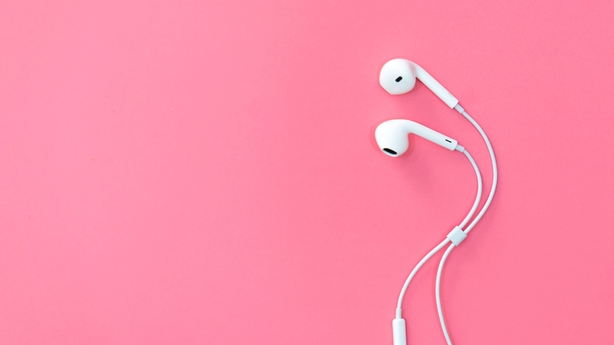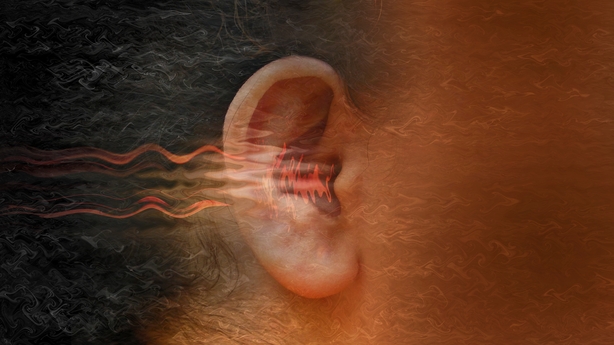There are so many brands selling headphones now; from big tech companies like Apple and Samsung, to small producers you've never heard of before, to companies that you’d never expect – like Dyson.
Consumers can choose between big, over-ear headphones, or the slightly smaller 'on-ear’ options – and within that you might have a studio version, or a gaming version.
Then, of course, you have the in-ear type (or pods, or buds, depending on the company selling them to you).
And most of the companies selling them will have options within those categories – like ‘pro’ or ‘sports’ models, which offer slightly different features, and come at a different price point too.
And, of course, there’s the choice between wired or wireless versions of all of these.
So there’s no easy answer to the question ‘what are the best headphones’?
We need your consent to load this rte-player contentWe use rte-player to manage extra content that can set cookies on your device and collect data about your activity. Please review their details and accept them to load the content.Manage Preferences
No – it really depends on a number of factors and, first and foremost, your budget.
You can probably go to a nearby euro saver-type shop and pick up a pair of wired headphones for maybe €2-3, and wireless ones for as little as €6.
They’re probably not going to be very good and they’ll probably break quite easily – but they’ll do the job in a pinch.
Or, if you wanted, you could spend over €1,000 on a pair of high-end headphones… and that would be cheap in some people’s eyes.
There’s even a pair of Sennheiser headphones that cost nearly €70,000 (though they do come paired with a high-end tube amplifier system, so that maybe justifies a tiny amount of the price-point).
But, like most people, you’re more likely to be looking to spend somewhere in the region of €50, €100, or maybe even €200 on a pretty decent pair.
And after budget it comes down what you’re looking to use them for and how – and even where – you’re going to use them.
And that will dictate what decisions you make.
So if you're going to exercise with them, you want to make sure they're light, comfortable - and won't keep falling out of your ear. You also want some level of water resistance, too.
If you're going to be wearing them on a noisy commute, some kind of noise cancellation would be useful.
If you're working in a professional audio setting, you may want a 'studio' headphones that give you a clearer representation of what you're listening to.
And one big decision is wired or wireless. Which is better?

Well, generally speaking, wired headphones are going to cheaper and they’re going to be slightly better in terms of sound quality.
Because when you send audio over Bluetooth, it’s usually a compressed version of the original track. So some of the detail has been squashed out.
The technology around that is getting better, though, and – realistically – unless you’re a real audiophile, you’re probably not going to notice that much of a difference.
There’s also a chance the song you’re listening to has already been compressed by the streaming service you use anyway, so it may not matter that much.
And one of the problems a wired headphone user will likely encounter nowadays is that the headphone jack is becoming an endangered species.
Very few smartphones sold today have a dedicated port for an old-fashioned headphone jack.
Instead, you have to use an adaptor to connect it to the USBC port that everything else goes through.
And that creates problems of its own – not least the fact that you have to have this tiny little adapter with you all the time.
And of course wireless headphones have other benefits – like not being physically tethered to the device the music is coming from – and not having to deal with tangled wires all the time.
The downside is it’s another thing you have to remember to keep charged.
Another plus for the wired option is that wireless headphones probably have a shorter lifespan, because the battery will slowly degrade over time. In a lot of cases, they’re not replaceable.
That’s particularly true of those little in-ear pods and buds – because there’s so much tech crammed in there, and it’s all glued together so things can’t be swapped in or out.
Which, from an environmental point of view, is a real negative.
A lot of headphones now will say they have noise cancelling – sometimes it’s passive noise cancelling, sometimes it’s active. What’s the difference?

Passive noise cancelling is essentially the external noise that’s physically blocked by the headphone itself.
If you think of those over-ear headphones, they’re covering your ears – and so it’s harder for you to hear other noises, even if you don’t have any music playing.
The same goes for the in-ear headphones that have the little rubber kind of gasket on the tips, which forms a tighter seal within your ear canal.
But active noise cancelling is far more complicated – and it’s actually a bit of an auditory marvel.
Because this involves your headphones doing some very complicated science, in real time, to cut the sound out before you hear it.
And it does that through little microphones that are built into your headphones.
They listen to the noises around you, take the waveform those noises create, flip it upside down, and play it to you at the same time – which pretty much cancels out the noise altogether.
And of course it has to do that in a split second, so its flipped sound gets to your ear drum at the same time as the noise it’s trying to cancel out.
For that reason, this tends to work best with constant, predictable noises – like the hum you hear when you’re on a plane, or the noise of heavy traffic.
But if someone beeps their horn right next to you, the technology is going to struggle to react to that quick enough to stop you hearing it at full volume.
And for that reason having a mixture of active and passive noise cancelling is generally best to cut out as much background noise as possible.
Some more advanced headphones will also give you the ability to tweak how the noise cancelling works.
So Apple’s newer AirPods, for example, offer something called ‘transparency mode’ – where the headphones will work to cancel out harsher ambient noises like construction work and traffic – but still allow enough of the outside world in that you have some awareness of what’s around you.
And that same kind of technology can also be used in other ways.
If you’re using your headphones for hands-free phone calls, for example, it can flip the waveform to reduce the background noise that’s coming through your microphone, and into the ears of the person you’re talking to.
And while all of this may seem like a nice-to-have kind of luxury, there is an important benefit to good noise cancelling – because if you can block out as much of the background noise, you’ll be able to hear your music better without having to push the volume up to the limit… and that’s ultimately going to be good for reducing your risk of hearing damage.
On that subject - some people may have had their phones tell them their headphones are too loud – is that accurate?

This is the feature that might pop up saying ‘your noise exposure is at dangerous levels’ – or it might even automatically lower the volume of what you’re listening to… which can be a bit annoying.
How accurate that is depends, though. And it essentially boils down to ‘are the headphones you’re using the same brand as your phone?’.
If they are, then the phone would actually have a better idea of the actual level of noise that’s going through the headphones and into your ears.
And so, in that case, it may be worth heeding its advice to lower things down a bit.
But if the headphones are made by another company, it doesn’t have as much information – and so the warning is a best guess.
More often than not it’s based on the fact that you have the volume fader up all the way for an extended period of time.
But, of course, you might be doing that because the song or show you’re listening to is quite low to begin with. Or maybe the headphones themselves aren’t that good, so you have to go all the way to the top to get anything out of them.
Some say they’re water resistant – is that true or is it marketing nonsense?

Some are fully water resistant - there are even some headphones designed for swimmers, but they’re probably a relatively niche product.
But even if you’re not planning on taking a plunge with your headphones, you should look for some level of protection.
Inevitably you’re going to get caught in the rain – or you’re going to spill something on them when you leave them on the table. If you’re wearing them while exercising, you’re certainly going to sweat all over them too.
To figure out how good or bad your headphones are at that, you should look for its IP code – which stands for Ingress Protection.
And that takes the form of the letters IP – followed by two digits.
The first digit tells you its protection against solid objects getting inside – in other words dust – and the second digit tells you against its protection against water.
And the higher the number, the better the protection.
So an X or a 0 means there’s no protection. A 1 means there’s protection against vertical drips of water – in other words a very light rain shower.
A 4 gives you protection against splashes of water for any angle – a 5 protects you against jets of water.
7 protects against full immersion at a depth one metre for half an hour – so probably what you want if you are going swimming… and it goes all the way to 9, which protects against immersion at high pressures and temperatures.
The dust rating goes up to six, by the way, which is classed as full dust-tight.
I’ve seen ads for earplugs recently – what can they do?
These are essentially a new generation of ear protection that goes beyond the old yellow foam plugs you’d buy in a chemist.
These products are reusable and designed for different scenarios – and they’re a bit more comfortable, and less conspicuous looking than the old foam ones.
They’re not battery powered – they’re just little silicone buds with a loop or hole in them, that essentially act like an extension to your ear canal.
And they’re shaped in such a way that they block certain frequencies from getting in, but still let others in.
An example would be at a concert –these plugs might take a few decibels out of the music from the speakers, and maybe dull the hum of the crowd around you – but you’d still be able to hear the music.
They’re also touted as study or work aids if you’re trying to focus in a noisy place, while some people with noise sensitivity – or those on the autistic spectrum – find them useful for dealing with noisy environments.
They may well be worth considering if noise is a problem, especially to the extent that it may damage your hearing.







